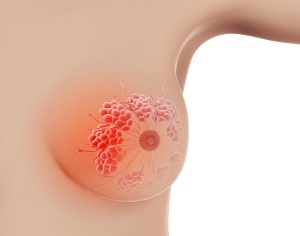
What is Breast Pain?
Breast pain, also referred to as mastalgia, mastodynia, and mammalgia, is any discomfort, tenderness, or pain in the breast or underarm region. The pain may range from mild to severe and can affect women of any age, but is most common in perimenopausal and premenopausal women.
What are the Causes of Breast Pain?
Breast pain may occur due to number of reasons, such as:
- Breast cysts
- Mastitis
- Breast trauma
- Chest wall pain
- Medications
- Breast cancer
- Benign breast tumours
- Breast surgery
- Breast size
- Hormone fluctuations
- Poorly-fitted bras
- Breast size
- Pregnancy
What are the Symptoms of Breast Pain?
Some of the common symptoms of breast pain include:
- Dull, heavy, or aching pain
- Constant or intermittent pain
- Pain that radiates to the underarm
- Tenderness in the breasts
- Swelling of the breasts or lumpiness
- Tight, burning, or sore breasts
- Pain related to menstrual cycle
- Pain related to breastfeeding
- Postmenopausal pain
When Should You See a Doctor for Breast Pain?
You are supposed to seek immediate medical attention from your doctor if you notice:
- A lump or thickened tissue in your breast.
- A change in the appearance of your nipple.
- A swelling or lump in your armpits.
- Rash encircling the nipple.
- Change in shape or size of the breasts.
- Discharge from the nipple.
- Dimpling of the breast skin.
- Pain in the breasts or armpits not related to menstruation.
- Pain that interferes with daily activities.
How is Breast Pain Diagnosed?
In order to diagnose the cause of breast pain, your doctor will perform the following:
- Review of your medical history
- A clinical breast examination to check for any lumps, nipple discharge, or changes in the appearance of nipple
- Examination of the lymph nodes in the armpit or lower neck to check for any swelling or tenderness to touch
If a breast lump or unusual pain or thickening of breast tissue is noted, your doctor may order further diagnostic tests, such as:
- Mammogram – an X-ray examination of the breast
- Breast biopsy – surgical removal of a sample of breast tissue for laboratory analysis
- Ultrasound scan – use of high-frequency sound waves to create pictures of breast tissue to look for any abnormalities
- Magnetic resonance imaging (MRI) – use of radio wave and strong magnetic field to produce detailed images of breast tissue to detect cancerous lesions
These diagnostic steps help in confirming the root cause of breast pain and determine the best course of therapy.
What is the Treatment for Breast Pain?
Some of the treatment measures that can be employed to manage breast pain include:
- Use of low-dose oral contraceptive pill.
- Use of pain medication such as paracetamol to make pain less severe.
- Use of therapies such as acupuncture or relaxation therapy.
- Use of a well-fitting and supportive bra to mitigate pain.
- Use of vitamin supplements and a specific diet.
- Decreasing your intake of sodium.
- Use of hormonal medications such as tamoxifen and danazol for severe pain that interferes with your lifestyle.
- Application of topical NSAIDs (nonsteroidal anti-inflammatory drugs) directly on the painful area.
- Maintaining a diary to record pain.
